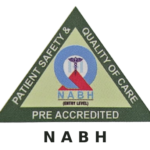Anesthesiology
What is anesthesiology?
Anesthesiology is the practice of medicine dedicated to:
- The comprehensive care of patients before, during, and after surgery and childbirth;
- Critical care medicine, and;
- The treatment of acute and chronic pain.
Several types of anesthesia are available, including general anesthesia, sedation anesthesia, and regional anesthesia. The type of anesthesia that is chosen is based on the patient’s medical history, the planned operation or procedure, and the patient’s preferences.
What does an anesthesiologist do?
A anesthesiologist is responsible for the patient’s well-being before, during, and after surgery. An anesthesiologist will do the following:
- Determine if it is safe to proceed with the anesthetic and surgery or procedure.
- Devise an anesthetic plan with the patient. This is typically general anesthesia, sedation anesthesia, or regional anesthesia such as a spinal, epidural, or regional nerve block (usually accompanied by intravenous sedation).
- Ensure unconsciousness with general anesthesia, or the appropriate level of sedation with sedation anesthesia.
- Monitor and maintain normal vital signs, including respirations (breaths), pulse, blood pressure, and temperature.
- Monitor and maintain normal levels of oxygen in the bloodstream and carbon dioxide gas in the lungs.
- Identify and treat any problem or emergency that may occur before, during, and after the procedure, such as an unexpected or allergic reaction to a medication, bleeding, or an unexpected change in vital signs.
- Minimize the stress response to the operation or procedure to allow the patient to make the best recovery.
- Control pain after surgery.
- Provide ongoing care after the surgery in the anesthesia care unit or intensive care unit.
The anesthesiologist may work with a certified registered nurse anesthetist (CRNA), resident physician, or a student nurse anesthetist. All of these caregivers will be supervised by the anesthesiologist, who retains overall responsibility for the patient’s safety.
Local Anesthesia
With local anesthesia, only the surgical area is numb. Local anesthesia may be given by injection or spray, or as an ointment. You will be awake or moderately sedated. Local anesthesia is often used for outpatient procedures such as foot or hand surgery. Dentist and doctor’s offices usually use this method. You will go home that same day. You may continue to feel numbness in the surgical area afterwards.
Regional Anesthesia
This form of anesthesia numbs a portion of the body, such as the lower body, with spinal or epidural anesthesia, or an extremity (arm or leg) with nerve block anesthesia. Examples of how regional anesthesia is often used include spinal anesthesia for knee and hip replacement surgery, epidural anesthesia for childbirth, and nerve block anesthesia for shoulder or wrist surgery.
General Anesthesia
General anesthesia allows your surgery or procedure to be performed safely while you are deeply asleep or unconscious. Your vital organ functions and your vital signs will be monitored and maintained while you are under a general anesthetic. You will also receive pain medication, and your body’s stress response to surgery will be reduced as much as possible. These measures will speed up your recovery after surgery.
What are the risks of anesthesia?
Thanks to technology and advanced medical training, anesthesia is very safe. However, risks do exist and complications can occur. Risk depends on your planned surgery or procedure and your surgical diagnosis, other medical conditions, overall health status, and age. Ask your doctor about specific risks associated with your operation or procedure.
You can reduce your risks of having anesthesia by discussing the following with your surgeon and anesthesiologist beforehand:
- Your health conditions (such as high blood pressure, heart, lung, or liver disease, or diabetes).
- Your blood transfusion history.
- Any history you have of depression or other psychiatric disorders.
- Your recent surgeries and hospitalizations.
- Previous difficulties you have had with anesthesia.
- Your dental history (loose teeth, crowns, or bridges).
- Medications you take (prescription, over-the-counter, or herbal).
- Your medication and food allergy history.
- Your tobacco, alcohol, and recreational drug use history.
- Blood relatives who have had difficulties with anesthesia.


